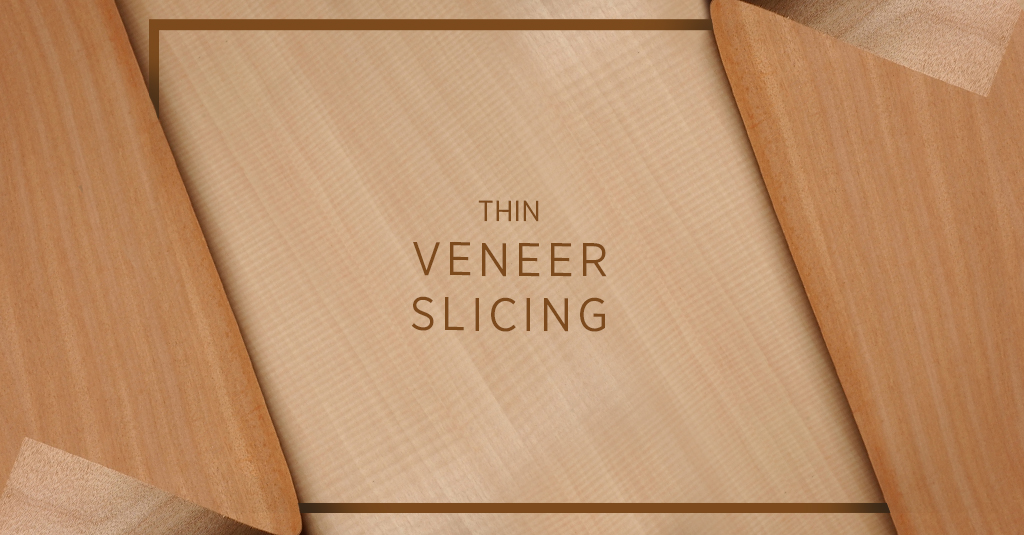
Wood veneer is made using real wood, but because of its design, it offers vastly more flexibility and durability. At Jacaranda, we have a special patented process that enables us to get more veneer from each log. Here is what you need to know about how we craft our fine wood veneer.
1. Debarking
After selecting and felling a tree, it first must be debarked. This is essential for removing the bark and allows the wood to be processed further. We debark logs using specially designed machines, which stripe the bark without interfering with the core underneath.
2. Softening
After the log is debarked, moisture is added to prevent damage as the log is further processed. Softening can be done in a variety of ways, but at Jacaranda, we soak our logs in large vats. This process can last from a few hours to a few days depending on several factors, including species, size, and hardness.
3. Wood veneer slicing
Slicing is the next step. This is the process of slicing the log, and much like softening, there can be different methods of peeling. Each wood veneer slicing technique creates a different grain pattern to best highlight the beauty and texture of a particular log.
Rotary cutting is a common slicing method that is done by spinning a log against a blade. As the lathe rotates, the wood is sliced into thin sheets. Rift cutting is similar to rotary cutting, but the log is cut into lengthwise quarters before being mounted on the lathe and rotated against the blade.
For quarter cut veneer, logs are placed in a slicer, similar to a deli slicer. The logs are moved back and forth along the blade to slice the wood thinly. In flat cutting, the blade passes from side to side over the log.
Regardless of the peeling method used, the resulting wood veneer wallcovering will have the same thickness and quality. The only variations are in the pattern of the grain.
4. Drying
Once the log has been peeled, it must be dried to continue its transformation into veneer. Each sliced veneer is placed in a large dryer to ensure it dries flat and evenly. The dried veneer is stacked in bundles until it is ready for the next and final steps of the process.
5. Clipping, Cutting, and Gluing
In the final steps of the wood veneer process, we cut each bundle into the desired size and trim for consistency. The sheets are then placed in a gluing machine that will bond them together to create full-sized wood sheets.
These sheets are ready to be bonded to a substrate, which will then be ready to apply to walls or other structures. The wood can be dyed, stained, and finished with a urethane coat to enhance and perfect it, keeping it strong and durable for many years to come.
For more than 40 years, Jacaranda has been an industry leader, crafting the finest wood veneer wallcovering using our patented method. We offer more than 100 species in a variety of colors, cuts, and finishes. Contact our team today to learn more or to schedule an appointment with our design team.


